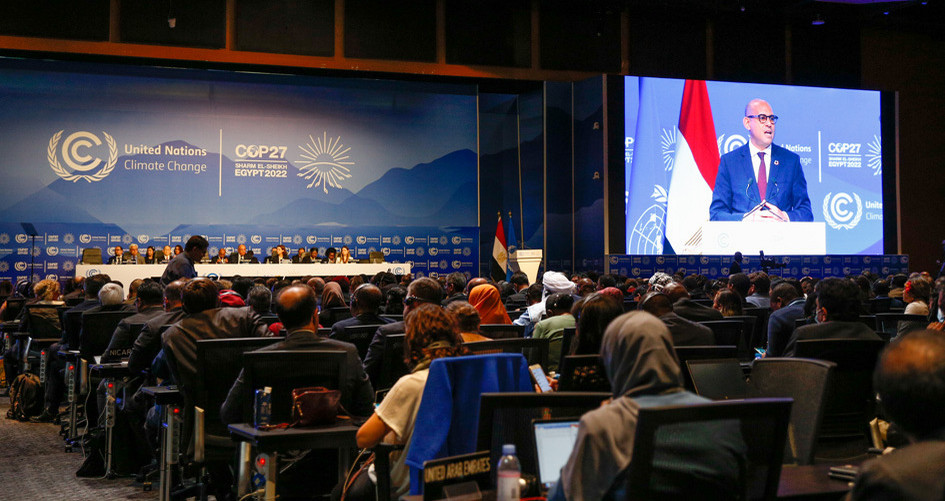Nearly 200 countries gathered at the United Nations climate conference in Egypt. The main issue they are clashing over is whether rich countries should pay compensation to vulnerable states. Vulnerable countries are the ones that are hit by climate-related disasters and they insist on loss and damage compensation.
The COP27 summit follows after a whole year of different natural disasters. There were floods in Pakistan, droughts that wilted crops in different parts of the world, and wildfires… This climate-caused situation has intensified calls from developing countries for a special “Loss and Damage” fund. However, because rich countries have been resisting such calls, the issue has been stalled for years. Actually, for more than 30 years.
As things are, for now, it is not likely this question to be solved at COP27 in Egypt. But here are some points to know.
What is meant by ‘Loss and damage’?
The expression ‘Loss and Damage’ in UN climate talks means expenditures already incurred as a result of climate-related weather impacts. Among them, rising sea levels impact a lot of small island countries.
Climate funding has been mainly focused on reducing CO2 emissions as an effort to fight climate change. Approximately, one-third of the funding went toward projects to assist small communities in adapting to future impacts.
Loss and damage funding would be different. Its goal is to compensate countries for costs that they cannot bypass or adjust to.
However, there is no agreement on what constitutes ‘loss and damage’ when we talk about climate disasters. It can include damaged infrastructure and property. But, as well it is more difficult to value the damage to natural ecosystems or cultural assets such as burial grounds.
In a report from June this year report encompassing 55 vulnerable countries, it is said that their combined climate-related losses over the last two decades cost about $525 billion. It is approximately 20% of their total GDP. According to some estimates, such losses could reach a fantastic sum of $580 billion per year by 2030.
Who should pay, and who should be paid?
These are very polemic questions. Affected countries and campaigners think that rich countries should pay for most of the climate change-caused damages. This is because most of the climate change is caused by the historical emissions of already developed countries. If the payment on this basis starts, primarily the United States and the European Union fear spiraling liabilities. Thus, they have resisted this argument. And they still are.
The other rising problem is that even if countries agree to establish a fund, they must work out the details about how and to whom will be paid. Also, among the details are such as where the money will come from. The other question to be solved is how much wealthy countries will pay. And, finally, which countries or disasters will be compensated for climate change-caused damages?
At last year’s United Nations climate talks, the EU and the US blocked a proposal to establish a fund for the above-mentioned reasons. Instead, they opted for dialogue. But, that proposal for dialogue had no clear end goal.
They agreed to discuss compensation at COP27 which happens now in Egypt. But, as things are so far, they are still wary of establishing that kind of fund.
Only some countries ad regions, such as Denmark and Scotland, as well as the Belgian region of Wallonia, have made small, symbolic funding commitments for the loss and damage fund.
Some existing United Nations and development bank funding do assist states experiencing loss and damage, though it is not officially designated for that purpose.
Expectations, possibilities, and… reality
Developing countries have offered to include loss and damage on the summit agenda. It must have been unanimously approved before the talks can begin.
Disheartened by the hardships and hesitance in securing climate finance, developing economies decided to join the forces to demand the establishment of a loss and damage fund at this COP in Egypt.
For more than 30 years, developing countries have demanded this specific funding to deal with the climate disasters caused by developed countries’ high emissions. And, after 30 years – a small victory came! Loss and damage have finally made it onto the agenda at this COP27.
But, there is a long way to establishing the fund itself. Different nations have proposed various strategies for the fund. Even if COP27 delivers an agreement to launch a fund, it could take years before it is ready to allocate budgets.
Some diplomats have proposed organizing a “mosaic” of funding sources rather than a single central fund. The Alliance of Small Island States proposed establishing a U.N.-hosted response fund to collect funds from various sources.
The EU proposal is for existing international funds to be used in addressing loss and damage rather than creating a new one. But, some experts argue that issues such as long delays make those funds unsuitable for dealing with loss and damage.
What if the issue stays on the level of ‘we agreed to agree’?
Some countries are looking for alternative solutions after wealthy nations failed to deliver $100 billion in climate finance annually by 2020.
At COP27, the “V20” group of 58 vulnerable countries and the Group of Seven rich nations plan to launch the “Global Shield” initiative, which will aim to strengthen insurance and disaster protection finance.
In the meantime, climate-vulnerable countries are soliciting contributions for a pilot loss and damage funding facility. Other suggestions include U.N. Secretary-General Antonio Guterres’ proposal for a windfall profit tax on fossil fuel companies to raise funds.
Meanwhile, the Pacific island nation of Vanuatu has requested that the world’s highest court, the International Court of Justice, issue an opinion on the right to be protected from adverse climate impacts. An ICJ decision could have moral and legal weight, reinforcing calls for poor countries to be compensated.

